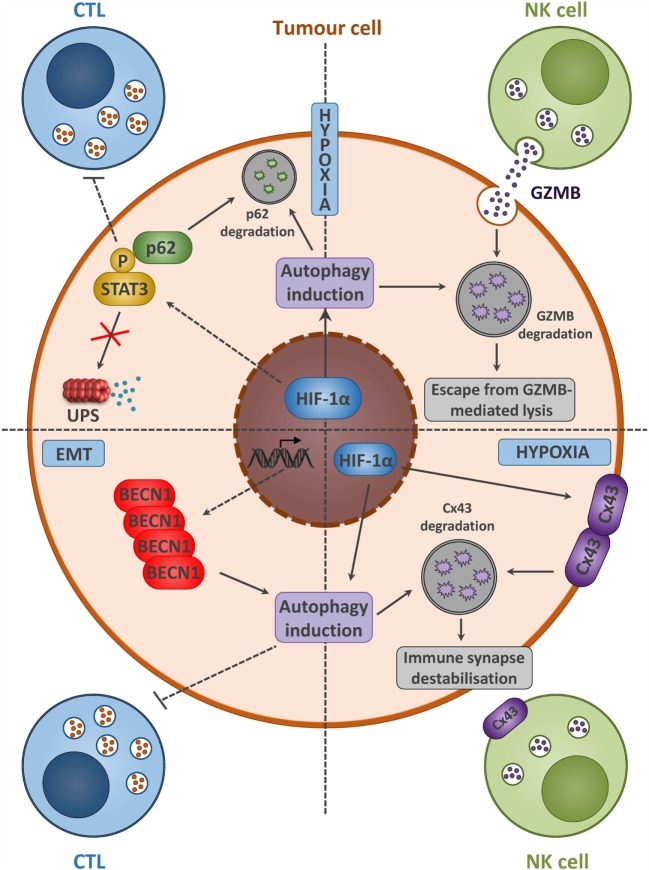Figure 3.
Tumor cells with activated autophagy defend themselves from NK- and CTL-mediated killing by diverse mechanisms. Hypoxia and/or EMT activation induces autophagy in tumor cells. A summary of diverse mechanisms by which autophagy activation leads to the acquisition of tumor cell resistance to CTL and NK-mediated lysis. Hypoxia-induced autophagy in cancer cells acts as an intrinsic resistance mechanism to NK-mediated lysis through the selective degradation of the NK-derived serine protease granzyme B (GZMB) (upper right). Moreover, the selective degradation of the gap junction protein connexin 43 (Cx43) is also implicated in the destabilization of the interaction between tumor and NK cells (lower right). The activation of the signal transducer and activator of transcription 3 (STAT3) signaling along with autophagy activation in tumor cells leads to the acquisition of resistance to CTL-mediated lysis (upper left). Autophagy activation, following epithelial-to-mesenchymal (EMT) induction, leads to BECN1 overexpression, and is sufficient to overcome CTL-mediated attack (lower left).

